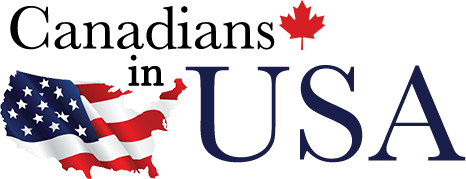
Visiting the U.S.
Canadians are permitted to visit the United States for up to 6 months in a 12 month period. This is not based on a calendar year. If you stay for 6 months, you must depart the United States for 6 months before you are permitted to re-enter as a visitor. You cannot stay for 6 months, leave briefly and re-enter for another 6 months.
B-1 Status
The B-1 status is for Canadian citizens coming to the U.S. to engage in business. Examples including traveling to the U.S. to consult with business associates; to attend a scientific, educational, professional or business convention; to settle an estate; or to negotiate a contract. You can certainly come down to the U.S. for your job with a Canadian employer. The best way to think about it is that you can come to the U.S. to conduct business, but you should not be employed by a U.S. company, or take a wage/salary while you are down here. If you do, then a B-1 status may not apply and you should consider an L-1 visa, O-1 visa, TN visa , or H-1B visa.
Athlete competing for prize money
Professional athletes coming to the U.S. to compete for prize money can enter the U.S. on a B-1 status. While the athletes are receiving compensation in the form of prizes, it is not really a salary, wage or employment that would require another type of visa. However, you may be required to pay U.S. taxes on any prize money you win.
B-2 Status
Canadians coming to the U.S. for vacation or to visit family and friends for a short period of time would enter on a B-2 status. There are other situations in which you may enter on a B-2. For example, you may come to the U.S. on a B-2 status if you are seeking medical treatment. To do so, be sure to bring appropriate documentation, including a copy of your diagnosis, a letter from the U.S. medical establishment that has agreed to treat you, as well as documents indicating that you can support yourself financially while in the U.S.
Caveats
While these visas may appear straightforward on its face, several things must be considered before coming to the United States in B-1 or B-2 status, particularly if your intent is other than just a temporary visit. For example, if you are engaged to a U.S. citizen and are planning to get married and apply for a green card, a B-2 status is not for you. Instead, you need to obtain a K-1 fiancé visa or consider a marriage-based green card through consular processing.
If you are a prospective student traveling to the U.S. looking to enroll in a university, you may do so as a B-2 visitor. Once you enroll in a school, you can change to F-1 status. However, it is important that you tell the CBP officer at the border that you are entering the U.S. as a “prospective student” when entering as a visitor. Otherwise, you may have difficulty changing to F-1 status. Few people know about this requirement, and many prospective students often find themselves having trouble changing to F-1 status because they entered the U.S. in B-2 status without specifying their intent to become a student. If you don’t want to change your status, you can also return to Canada and the re-enter in F-1 status at the border.
Banned from the U.S.
While Canadians generally enjoy the benefit of traveling freely to and from the United States, some Canadians end up being banned from the United States for one reason or another – overstaying on a visa being the most common. Depending on the length of the overstay, the ban may be anywhere from five years to ten years. There are ways for Canadian citizens to try to lift the ban, including an Application for Waiver of Grounds of Inadmissibility, Application for Permission to Re-Apply for Admission into the United States after Removal/Deportation, and an Application for Advance Permission to Enter as a Non-Immigrant.

